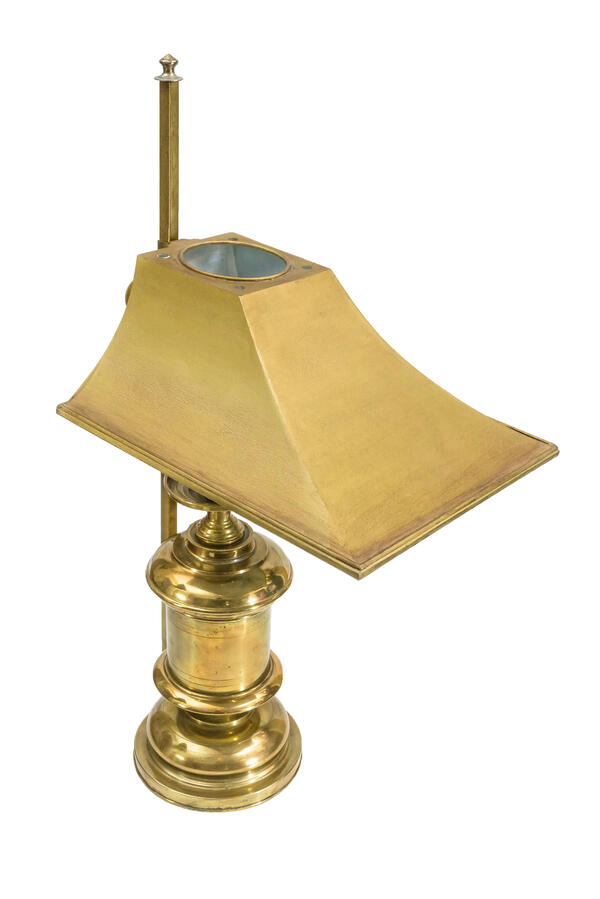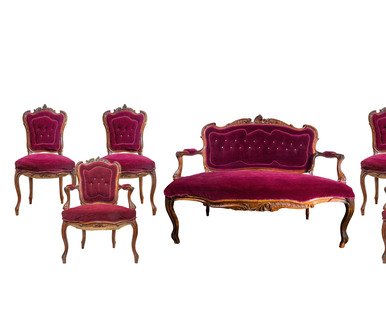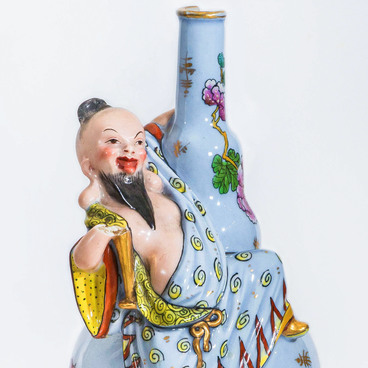An electric lamp, which belonged to the writer stands on the desk in the study of Dmitry Mamin-Sibiryak. The lamp was made of copper at the end of the 19th century and covered with gilding. Mamin-Sibiryak originally used it as a kerosene burner, and later redesigned it.
The lamp was kept with the Mamins. In February 1936, Sofia Guvale, the sister of Olga Guvale, the writer’s wife, gave it to the museum of local history, and in 1953, the artifact went to the Mamin-Sibiryak Memorial House-Museum.
The lamp consists of two parts. At the bottom, there is a heavy hollow metal base, a former kerosene tank. Originally, a combustible substance was poured into the container, and from there it was dosed into the combustion zone by a cotton wick.
To prevent the formation of toxic smoke during the work, the burner had special holes. With their help, air was supplied to the reservoir and combustion products were drained. The light of the kerosene lamp was a little brighter than candle light. In case the lamp began to smoke, the wick was manually trimmed with sharp scissors.
A bulb holder was attached to the former tank. On top, on a tripod, is a lampshade — a visor to diffuse light. It can be raised and lowered with a screw. Inside the lampshade, there is a hole for the lamp glass, which used to protect the wick — this element was not preserved.
It is believed that the first kerosene lamps appeared in 1853, in Lviv. The Austrian pharmacists Ignacy Lukasiewicz and Jan Zech, who lived there, redesigned the oil lamp and began to use kerosene as a combustible substance. Serial production of such lamps began in 1856 in America, and they soon became popular in many countries around the world.
When electricity began to spread in Russia, in the late 19th and early 20th centuries, kerosene lamps were used less. During the 20th century, they were in demand in the villages and small towns.
Now lamps with a flammable substance are rarely used: only where there is no electricity, during emergencies, as well as in camping trips.
The lamp was kept with the Mamins. In February 1936, Sofia Guvale, the sister of Olga Guvale, the writer’s wife, gave it to the museum of local history, and in 1953, the artifact went to the Mamin-Sibiryak Memorial House-Museum.
The lamp consists of two parts. At the bottom, there is a heavy hollow metal base, a former kerosene tank. Originally, a combustible substance was poured into the container, and from there it was dosed into the combustion zone by a cotton wick.
To prevent the formation of toxic smoke during the work, the burner had special holes. With their help, air was supplied to the reservoir and combustion products were drained. The light of the kerosene lamp was a little brighter than candle light. In case the lamp began to smoke, the wick was manually trimmed with sharp scissors.
A bulb holder was attached to the former tank. On top, on a tripod, is a lampshade — a visor to diffuse light. It can be raised and lowered with a screw. Inside the lampshade, there is a hole for the lamp glass, which used to protect the wick — this element was not preserved.
It is believed that the first kerosene lamps appeared in 1853, in Lviv. The Austrian pharmacists Ignacy Lukasiewicz and Jan Zech, who lived there, redesigned the oil lamp and began to use kerosene as a combustible substance. Serial production of such lamps began in 1856 in America, and they soon became popular in many countries around the world.
When electricity began to spread in Russia, in the late 19th and early 20th centuries, kerosene lamps were used less. During the 20th century, they were in demand in the villages and small towns.
Now lamps with a flammable substance are rarely used: only where there is no electricity, during emergencies, as well as in camping trips.



